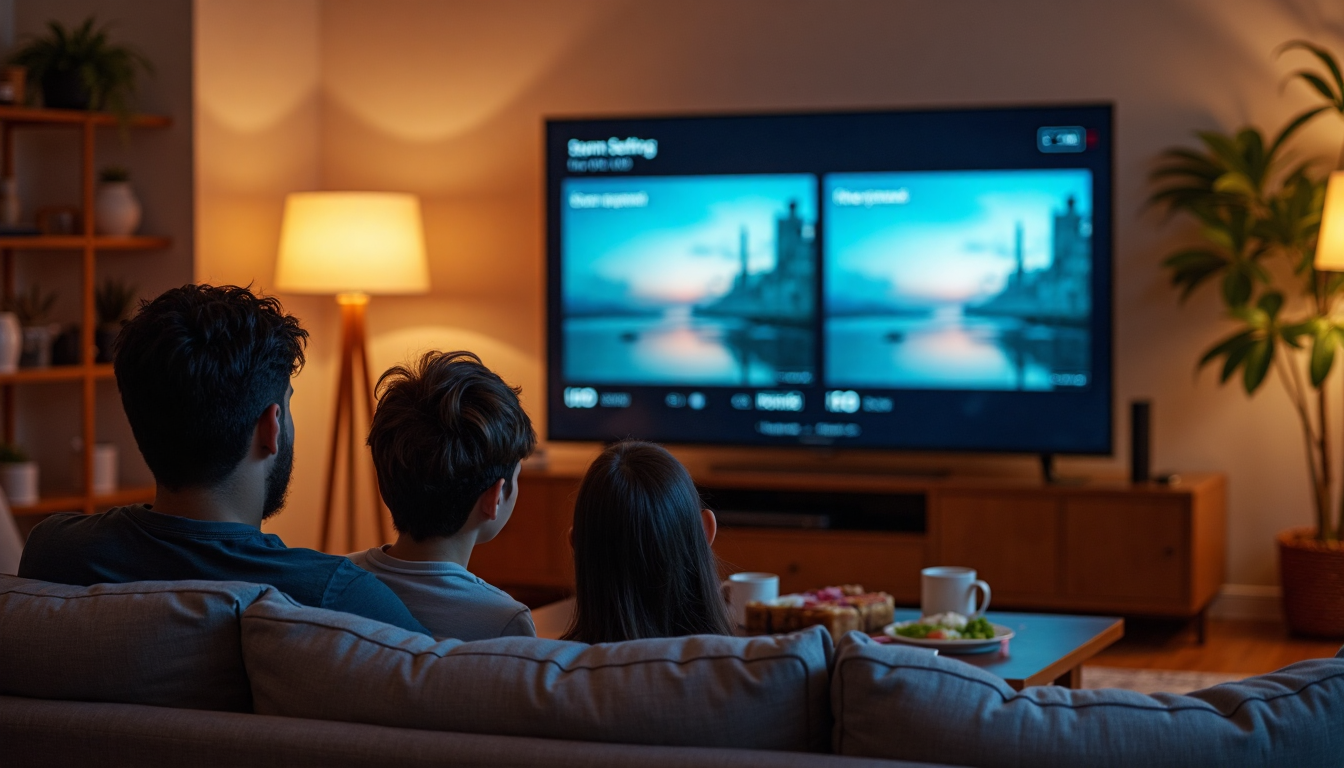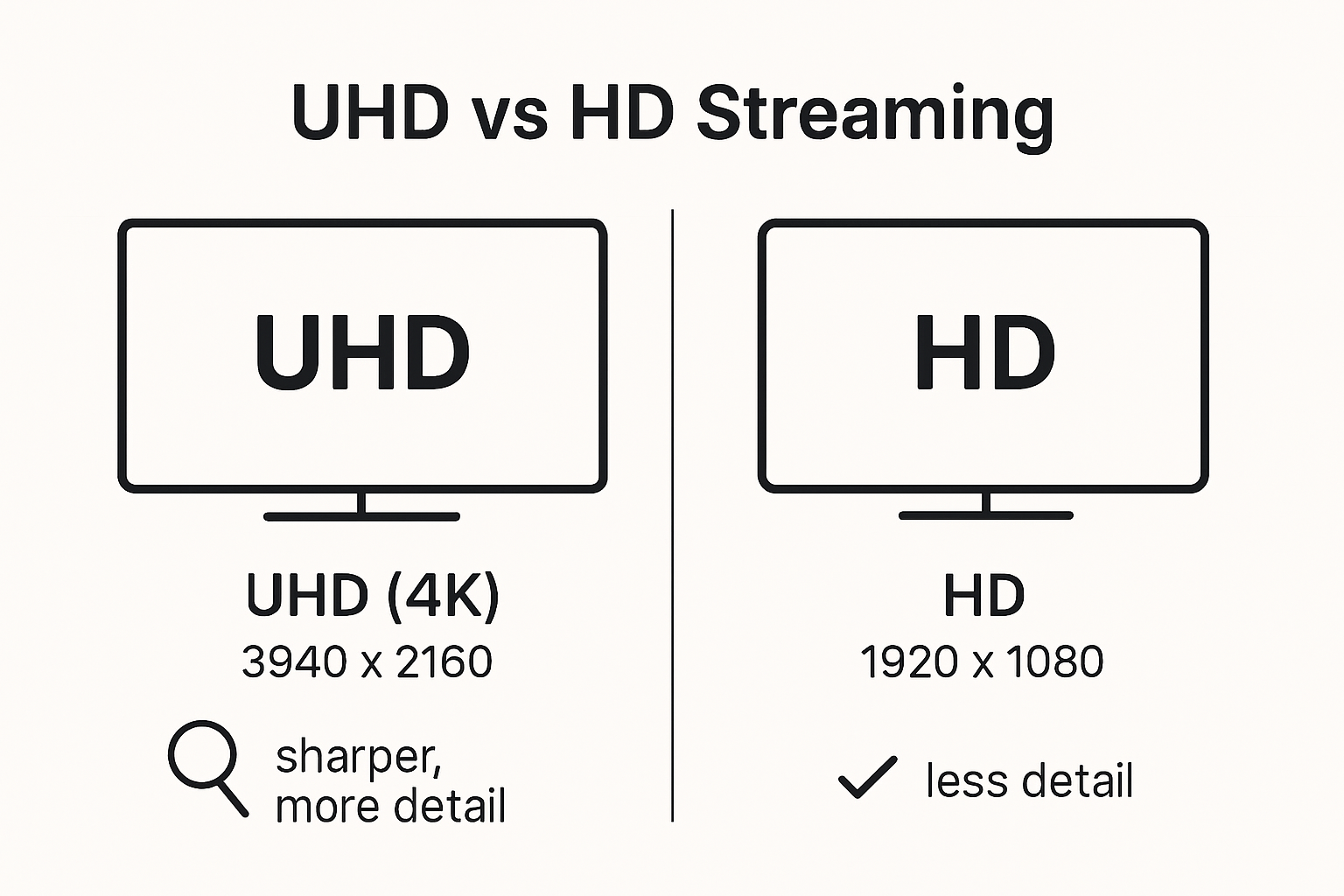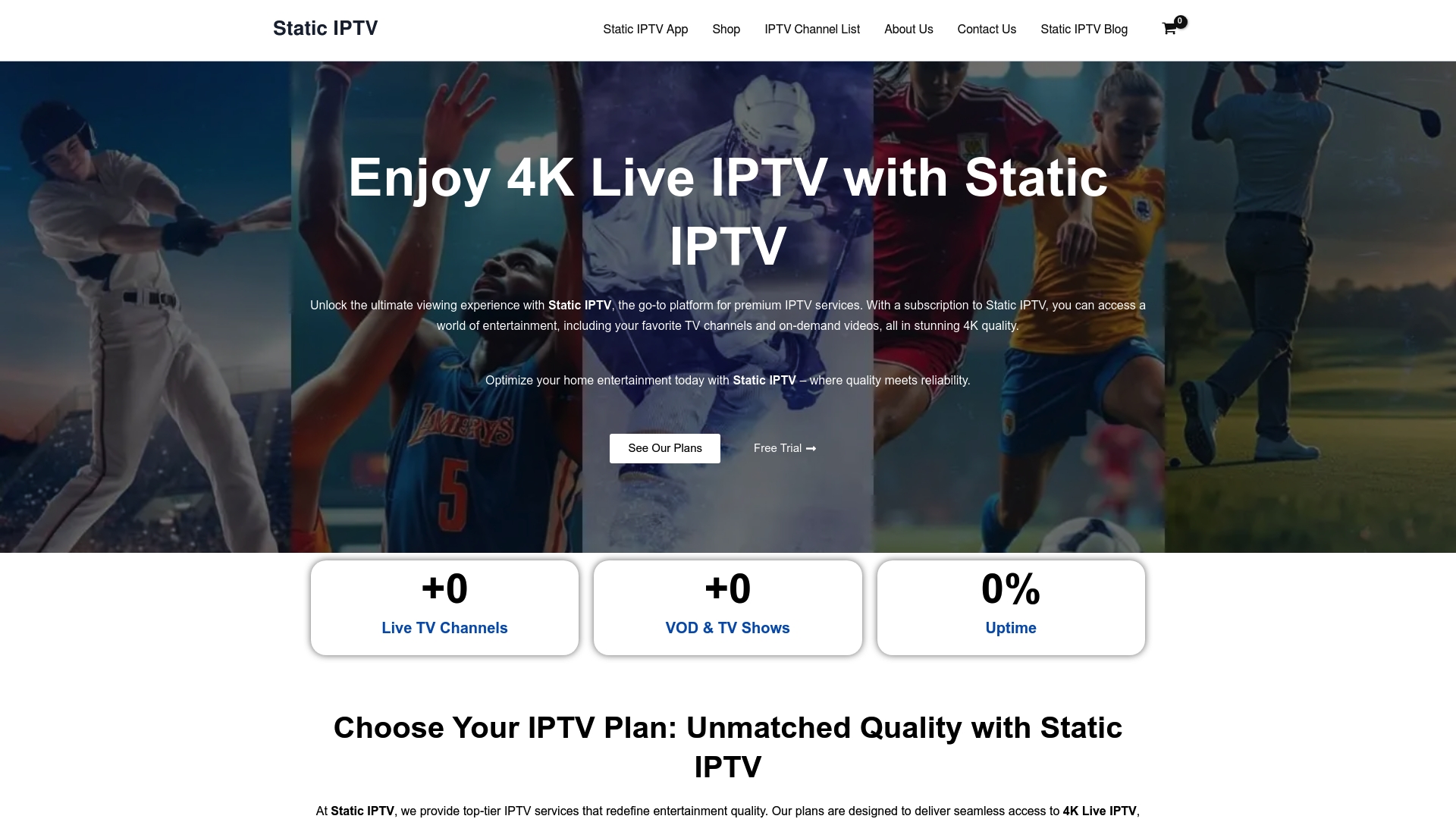Streaming quality has become a huge deal as more people upgrade their home entertainment. UHD streaming uses four times as many pixels as standard HD, giving you crisper detail like never before. Yet many are surprised to learn that this extra clarity demands a staggering jump in internet speed and data usage. Here’s the kicker: most viewers may not even notice a clear difference between UHD and HD at their usual couch distance. Curious to see if all that hype and extra bandwidth are really worth it?
Table of Contents
- What Is Uhd Vs Hd Streaming?
- Picture Quality And Streaming Speeds Compared
- Cost, Device Support, And Accessibility Factors
- Is Uhd Streaming Worth It For Your Home?
Quick Summary
| Takeaway | Explanation |
|---|---|
| UHD vs. HD Resolution | UHD streaming (3840×2160) offers four times the pixel density of HD (1920×1080), resulting in significantly better image clarity and detail. |
| Bandwidth Requirements | UHD streaming requires a minimum internet speed of 25 Mbps compared to 5-10 Mbps for HD, affecting data consumption and user experience. |
| Device Compatibility | UHD requires specific 4K-enabled devices, while HD is compatible with older technology, impacting accessibility and investment decisions. |
| Cost Considerations | Higher data usage and potential premium subscription costs for UHD make it essential for consumers to weigh these economic factors against personal viewing preferences. |
| Perception of Quality | Viewers may not always perceive a clear difference between HD and UHD, especially at typical viewing distances, suggesting that the upgrade might not be necessary for all households. |
What Is UHD vs HD Streaming?
Understanding the core differences between UHD and HD streaming is crucial for modern entertainment consumers seeking the best visual experience. Streaming resolution fundamentally defines the quality and detail of the content you watch, with significant variations between HD and UHD technologies.
Resolution and Pixel Density
At its core, the primary distinction between HD and UHD streaming lies in pixel count and image clarity. Discover more about our premium streaming options that showcase these technological differences. High Definition (HD) streaming traditionally operates at 1920×1080 pixels, providing a clear and crisp image that has been the standard for over a decade. In contrast, Ultra High Definition (UHD), commonly known as 4K, quadruples the pixel density with a remarkable 3840×2160 resolution.
According to research from eureka.patsnap.com, this increased pixel count means UHD displays deliver four times more visual information compared to traditional HD. The result is an extraordinarily detailed image with sharper edges, more nuanced color gradients, and a level of visual clarity that makes viewers feel like they are looking through a window rather than watching a screen.
Bandwidth and Technical Requirements
The jump from HD to UHD streaming isn’t just about visual quality it demands significant technical infrastructure. Streaming UHD content requires substantially more bandwidth and internet speed. Eureka’s technical analysis reveals that while HD streaming might function effectively with internet speeds around 5-10 Mbps, UHD streaming typically requires a minimum of 25 Mbps to deliver a smooth, buffer-free experience.
Moreover, UHD streaming often incorporates advanced technologies like High Dynamic Range (HDR), which extends beyond mere pixel count. HDR enhances color depth and contrast, creating images with more vibrant and realistic color representation. Traditional HD displays typically lack this sophisticated color processing, making UHD a significantly more immersive viewing experience.
For consumers, this means carefully considering their internet infrastructure, device capabilities, and personal viewing preferences when choosing between HD and UHD streaming. While UHD offers superior visual quality, it comes with higher technical and financial requirements that might not suit every viewer’s circumstances.
Picture Quality and Streaming Speeds Compared
Choosing between UHD and HD streaming involves more than just visual aesthetics. The performance metrics, data consumption, and technical requirements play crucial roles in determining the optimal streaming experience for different users. Learn about our streaming test options to understand your network capabilities.
Bandwidth and Data Consumption
The most significant difference between UHD and HD streaming lies in their bandwidth and data requirements. According to research from vdocipher.com, HD streaming typically requires 5-8 Mbps internet speeds, while UHD streaming demands a minimum of 25 Mbps. This substantial bandwidth difference translates directly into data consumption patterns.
For instance, data from testmyspeed.com reveals stark variations in data usage. An hour of HD streaming consumes approximately 1.5-2.5 GB of data, whereas the same duration of 4K UHD streaming can eat up 7-10 GB. This dramatic increase in data consumption means users with limited or metered internet plans might find HD streaming more economical and practical.
Below is a table summarizing the bandwidth and data usage differences for an hour of streaming in HD versus UHD. This helps highlight the practical impact on your internet plan and monthly data usage.
| Quality | Resolution | Recommended Bandwidth | Data Usage per Hour |
|---|---|---|---|
| HD | 1920×1080 | 5-8 Mbps | 1.5-2.5 GB |
| UHD/4K | 3840×2160 | 25 Mbps (min.) | 7-10 GB |
Video Compression and Quality Optimization
Modern streaming technologies have significantly improved video delivery efficiency. Research from detectmind.com highlights advancements in video compression technologies like H.265/HEVC, which enable more efficient 4K content streaming at lower bitrates. These technological innovations help bridge the gap between UHD’s demanding requirements and users’ existing network infrastructures.
Video compression algorithms now allow for more detailed imagery without proportionally increasing bandwidth needs. This means viewers can experience enhanced visual quality without requiring exponential increases in internet speeds. However, the fundamental trade-offs between resolution, data consumption, and streaming performance remain critical considerations for consumers.
Ultimately, the choice between UHD and HD streaming depends on individual preferences, internet capabilities, and viewing habits. While UHD offers superior visual detail, it comes with higher technical and financial demands. Consumers must balance their desire for pristine image quality against practical constraints like internet speed, data limits, and device compatibility.
Cost, Device Support, and Accessibility Factors
Navigating the landscape of UHD and HD streaming involves more than just visual quality. The economic implications, device compatibility, and accessibility considerations play pivotal roles in determining the most suitable streaming solution for diverse user needs. Learn more about our comprehensive IPTV provider options to understand the nuanced streaming ecosystem.
Device Compatibility and Technology Requirements
Device support represents a critical factor in the UHD versus HD streaming decision. According to research from allinthedifference.com, UHD streaming demands more sophisticated hardware. While HD content enjoys broad compatibility across older televisions and standard streaming devices, UHD requires specific 4K-enabled equipment like modern smart TVs, advanced streaming boxes, and high-end gaming consoles.
Google’s support documentation reinforces this technological divide, recommending a sustained internet speed of 20 Mbps for UHD streaming compared to just 5 Mbps for HD content. This technological threshold means consumers must invest not only in compatible displays but also in robust internet infrastructure to fully experience UHD streaming.
The following table compares device and infrastructure compatibility requirements for HD and UHD streaming, helping you assess what each format demands for optimal viewing.
| Feature | HD Streaming | UHD Streaming |
|---|---|---|
| Device Compatibility | Most TVs/monitors (incl. older models) | Requires 4K-enabled TVs/monitors |
| Streaming Hardware | Standard boxes, older sticks | Newer boxes, sticks, some consoles |
| Internet Speed (sustained) | 5-10 Mbps | 20-25+ Mbps |
| Cost of Upgrading | Typically none (existing hardware) | New device and possible ISP upgrade |
Accessibility and Inclusive Streaming
Accessibility emerges as a crucial consideration often overlooked in the UHD versus HD streaming debate. Research from Scope revealed a striking statistic: 80% of disabled users experience significant challenges with streaming platforms, primarily related to subtitle quality, navigation complexity, and feature limitations.
UHD streaming platforms must therefore prioritize inclusive design, ensuring features like high-contrast subtitles, audio descriptions, and intuitive interfaces are not compromised by the pursuit of visual excellence. While UHD offers superior image quality, accessibility features remain paramount for creating an equitable viewing experience across diverse user groups.
The economic calculus of UHD streaming extends beyond initial hardware costs. Higher data consumption, increased bandwidth requirements, and potential premium subscription fees contribute to a more expensive entertainment ecosystem. Consumers must carefully weigh these financial implications against their personal viewing preferences, technical capabilities, and budgetary constraints. Ultimately, the choice between UHD and HD streaming represents a nuanced decision balancing technological aspiration with practical considerations of cost, compatibility, and inclusive design.
Is UHD Streaming Worth It for Your Home?
Determining whether UHD streaming represents a worthwhile investment requires a nuanced evaluation of personal viewing habits, technological capabilities, and budget considerations. Check out our advanced 4K streaming solutions to understand the potential of UHD streaming in your home.
Perceptual Quality and Viewer Experience
Contrary to widespread marketing claims, the perceived benefits of UHD streaming are not always straightforward. Research published in Quality and User Experience reveals that viewers often struggle to distinguish between HD and UHD video quality, particularly at typical home viewing distances. This suggests that the visual upgrade might be less dramatic than consumers expect.
A detailed study from arxiv.org further illuminates this complexity, demonstrating that viewer preference for higher resolution content depends significantly on display device capabilities, resolution scaling, and bitrate. Not all UHD content delivers an equally transformative viewing experience, making it crucial to evaluate specific streaming platforms and content libraries.
Resource Considerations and Performance Impact
UHD streaming is not just about visual quality it represents a substantial technological and resource investment. Research presented at the International Broadcasting Convention highlighted that each enhancement in UHD streaming technical parameters increases energy consumption and bandwidth requirements. This means consumers must consider not just upfront costs but ongoing technological and environmental impacts.
The decision to adopt UHD streaming should factor in multiple elements: internet infrastructure, display technology, content availability, and personal viewing preferences. While UHD offers unprecedented visual detail, the incremental improvement may not justify the additional expense for all households. Budget-conscious viewers might find HD streaming provides an optimal balance between quality and cost-effectiveness.
Recent Posts
- UHD vs HD Streaming: Choosing the Best Option for 2025
- IPTV Best Internet Broadband 2025: What to Expect | StaticIPTV
- Exploring the Best IPTV Provider 2025 | StaticIPTV
- Discover the Best Paid IPTV Services for Firestick in 2025
- The Best IPTV Subscription Services of 2025 | StaticIPTV
- The Best IPTV Player for Firestick in 2025 | StaticIPTV
- Discover the Best IPTV Service of 2025 | StaticIPTV
Ultimately, UHD streaming’s worth varies dramatically between households. Tech enthusiasts with robust internet connections and large 4K displays will likely appreciate the enhanced visual fidelity. However, casual viewers or those with limited technological resources might find the extra investment unnecessary. Careful assessment of personal viewing habits, available content, and technological constraints will guide the most appropriate streaming resolution choice.
Frequently Asked Questions
What is the difference between UHD and HD streaming?
UHD streaming (3840×2160) has four times the pixel density of HD streaming (1920×1080), resulting in much clearer and more detailed images.
What internet speed is required for UHD streaming?
UHD streaming generally requires a minimum internet speed of 25 Mbps, while HD streaming can be done effectively with speeds of 5-10 Mbps.
Is UHD streaming worth the extra cost?
The value of UHD streaming depends on your viewing habits and equipment. While it offers better image quality, many viewers may not notice a significant difference at typical viewing distances, making HD a more economical choice for some.
Do I need special devices for UHD streaming?
Yes, UHD streaming requires 4K-enabled devices such as modern smart TVs, advanced streaming boxes, or high-end gaming consoles. HD content, on the other hand, is compatible with older technology.
Upgrade Your Streaming Experience With Flexible UHD and HD IPTV Options
Are you tired of choosing between sharp picture quality and managing your internet data? As discussed in this article, many viewers face frustration when deciding if UHD or HD streaming really fits their needs amid concerns about internet speed, device compatibility, and rising subscription costs. Static IPTV understands these struggles, so we offer solutions that make your choice easy and risk-free. Our IPTV Subscription Plans are designed around your streaming preferences, letting you access both UHD and HD content with just one plan—no more difficult compromises or wasted spending.
Why wait to enjoy crystal-clear entertainment? With Static IPTV, you get
- Reliable high-definition and 4K streaming across 31,000 live channels and 100,000 on-demand titles
- Industry-best 99.99 percent uptime and full support for every device in your home
- Flexible plans for households big and small
Visit Static IPTV right now and choose a subscription that meets your quality and budget needs. Make the smart switch and enjoy the difference today.



